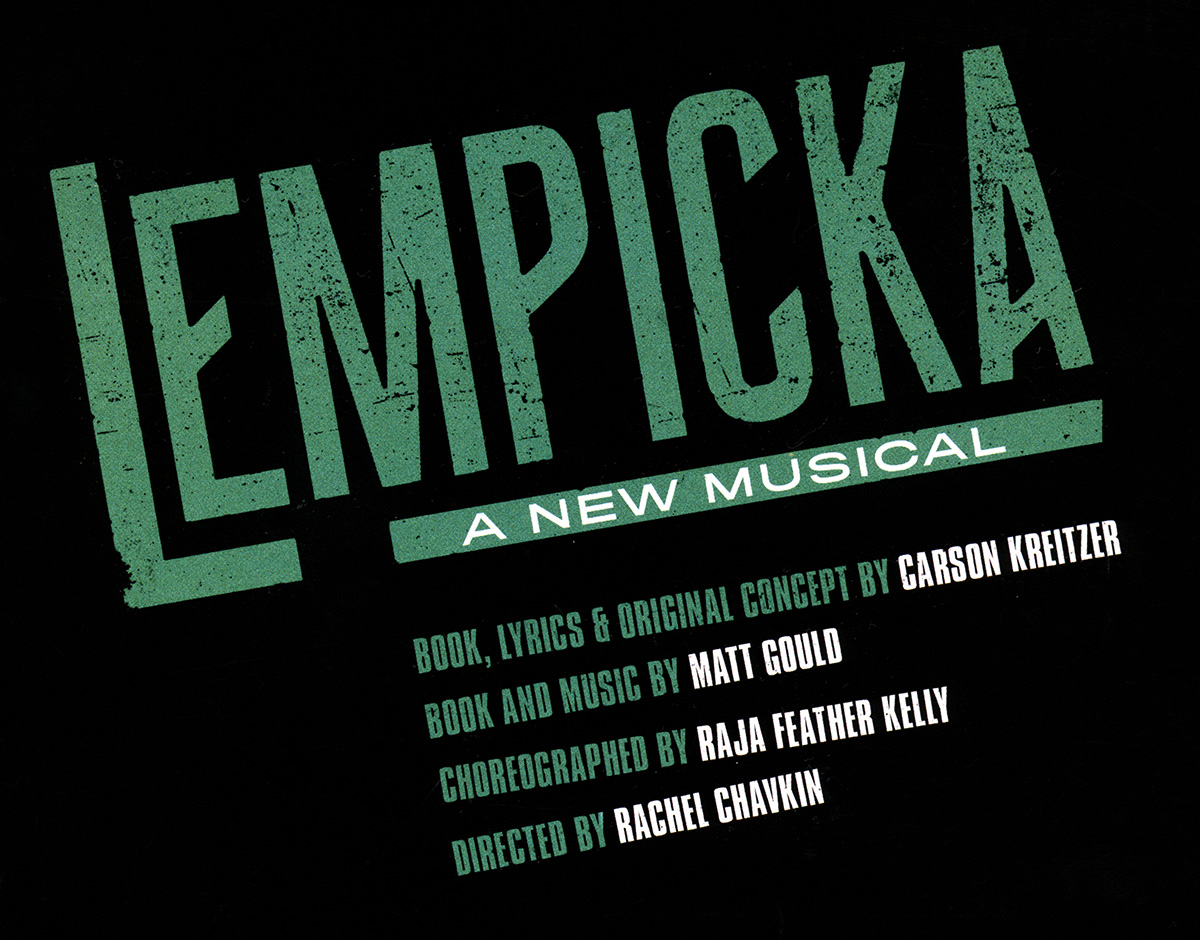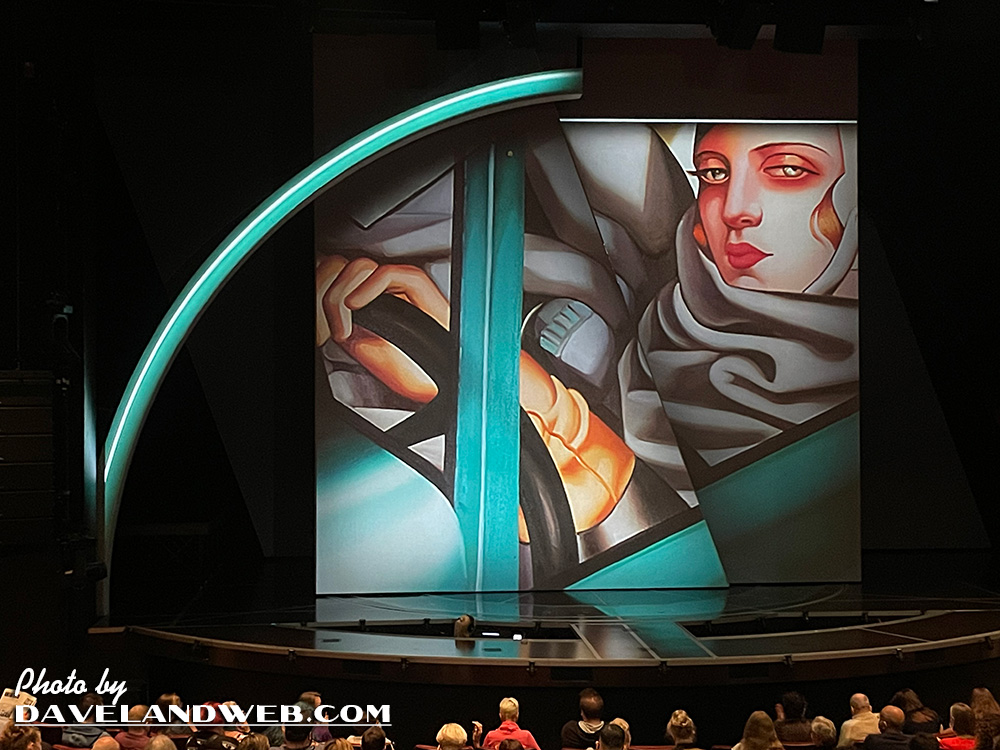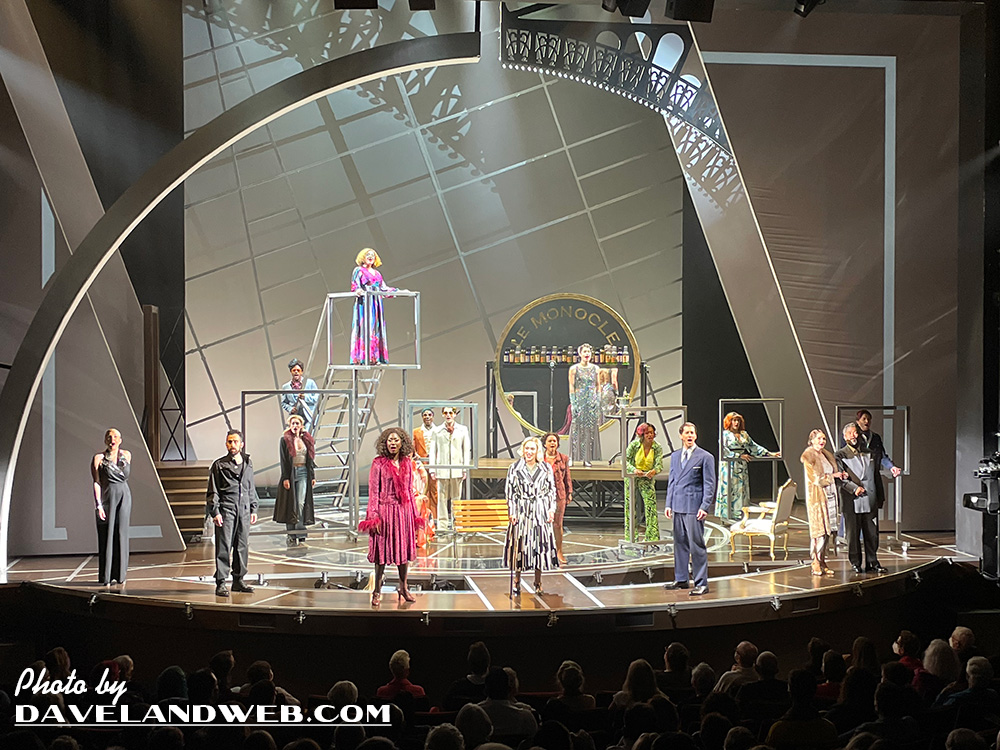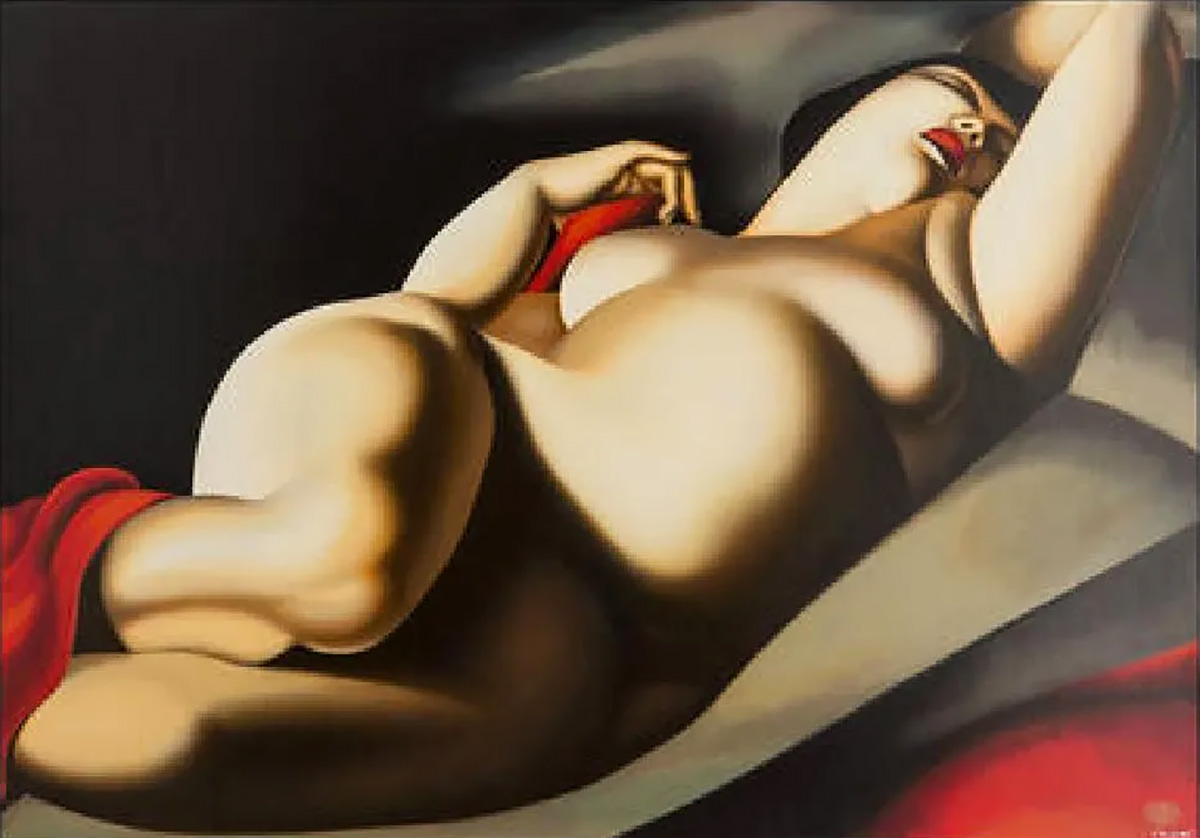
For the first time in years, I was excited to be able to attend a “live” theatre production at the La Jolla Playhouse, Lempicka - A New Musical. Based on the life of one of my very favorite artists, Tamara de Lempicka, I REALLY wanted to like it. I attended the show during preview week, when one expects a few rough spots before the actual opening. Afterwards, I found it hard to categorize my thoughts about what kept the play from being as innovative as its subject and why it seemed beyond fixing.
For one, the opening set piece (below) is about as much as you will actually see of Lempicka’s art; the rest of the play uses empty frames and words to flesh out the striking portraits that brought her to fame in the 1920s and 1930s. Were there copyright issues? Or was it a deliberate choice because the audience would be too busy seeing the distinct differences between the cast and the people in Lempicka’s paintings? Either way, without being able to experience her art, the “character” of Lempicka falls flat.

The Mozart musical biography “Amadeus” is a favorite movie of mine, even though it blends in a large amount of fiction dealing with composer/Mozart rival Salieri. Portraying him as a hack and a murderer, the story becomes more riveting, albeit at the expense of Salieri’s real-life reputation. With “Lempicka,” the dramatic license taken does a disservice to the people portrayed and does nothing to help the story.

Carson Kreitzer wrote the book and lyrics, stating in an interview, “She is bold; she is someone who devoured life in a way that I wish I could emulate.…I love her hunger for so many things, for beauty, for love.…[This is] the first enormous musical I have ever had the great joy to work on.…I’ve spent my life as a playwright bringing to the stage stories of women I wish I had known about growing up.”
Kreitzer’s main focus is the lesbian affair between the already married Tamara and one of her models, Rafaëla, culminating in a forced dramatic “who do I choose?” moment. Lempicka’s biography (written by her daughter Kizette) barely gives Rafaëla a mention other than to describe when the artist and the model met (“She was the most beautiful woman I had ever seen”) and the conversations between the two during the painting sessions, which centered around Rafaëla’s lust for needing men and her inability to live without one. The model fell in love with a neighbor of Lempicka’s and eventually married him. The painting below, “La Belle Rafaëla,” is the most famous collaboration between the two. While it seems that the torrid and illicit (for the time) affair between Lempicka and Rafaëla was mainly a plot device, it does provide a showcase for the one interesting character in the play. As portrayed by Amber Iman, Rafaëla is the only person I found myself wanting to know more about. Iman stole the spotlight from lead Eden Espinosa (who played Lempicka) with her two show-stopping solos.

The love triangle falls flat as well, since Lempicka’s husband has been written as a spineless philandering dolt. It is difficult to understand why Lempicka has a hard time choosing between the two. The play hits us over the head with commentary about equality for women and the discrimination experienced by gays, but does so in a way that falls far short of its predecessor, “Cabaret.” The story and characters (other than Rafaëla) are neither revolutionary or endearing, causing the 2 hour and 45 minute play to be somewhat of a snoozer. The songs fell flat for me, too. One number is sung by a woman dying of leukemia. It seems odd for someone on their last gasp to be belting out a showtune. Restraint can go a long way.
Just in case the audience misses that Lempicka is actually a statement about contemporary times, the plot begins as Tamara and her husband must flee Russia because of the Revolution, and later Paris as Hitler comes to power with World War II. I know, war sucks, and it’s typically caused by people who hate and are fueled by prejudice. I get it. I just don’t need to sit through 2 hours and 45 minutes of a less than compelling story to understand, especially when it has been done better already.
Summer: The Donna Summer Musical had different actresses effectively portray the singer throughout her life. Lempicka has a separate actress portray Tamara in her younger years who also does some questionable interpretive dancing that only seemed to inflate an already bloated story. Since that actress did not appear to be much younger than Espinosa, I found myself questioning why she was necessary. While a good actress, Espinosa is unable to capture the quirky nature of the real-life Lempicka, who was calculating, driven, and did not let the social constraints of the day fence her in. To have written her that way would have made a much more interesting and triumphant story as opposed to handing the audience a stereotypical victim of hatred and prejudice. Tamara de Lempicka succeeded in a world dominated by men and did exactly as she pleased; wouldn’t that be more inspirational than the story of a woman forced to pick between a drip of a man and a woman who beds men for a steak dinner?
I first encountered Tamara de Lempicka when I saw an Art Deco exhibit in San Francisco back in 2004.

This painting, The Young Lady with Gloves (1929/30), captivated me and has inspired me in so many ways.

My suggestion? Read the book, skip the musical, which tries too hard to be too many things and doesn’t quite succeed at any of them. You will find more inspiration with the real Tamara de Lempicka.
See more Daveland photos at my main website.

1 comment:
That's a shame about the lack of actual artwork. I could see the benefit of having a different background in each scene based on actual art that could have applied to what was happening on stage. The Salieri reference was brilliant. It punctuates that often what you see on stage or screen isn't so much about the topic but how much the author thought about the topic. You're getting someone's opinions of history, not factual history. I remember a lot of people thought that JFK movie by Oliver Stone was factual. Although I had never even heard the name Tamara de Lempicka until now, I recognize that art style immediately. It defined her times and was copied by many, still used in movies today when trying to portray the 20s and 30s art style. Amazing work.
Post a Comment